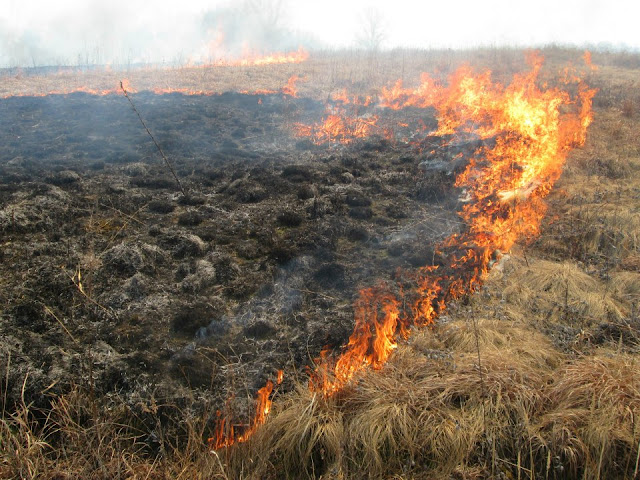The Missouri Botanical Garden in St. Louis first bought the land at Shaw Nature Reserve in the 1920s. It became an arboretum to which they would relocate trees in danger from all the pollution at the garden in St. Louis. Today there is well over 2,000 acres in the reserve. Its an area where the Ozark Oak-Hickory forests mingle with the glaciated prairies of the north. The much loved Meramec river passes through there, and a few miles north is the wide Missouri. I’ve been there countless times for research, for hiking, for a contra-dance in their overnight cabins, and native plant festivals. It’s a much loved place, for which the Garden folks are very proud.
 |
| I hadn’t told Dr. Trager, but I was fresh off crutches the day before and was limping my way along these hiking trails with my can of water and rake and a bit worried about escaping. |
 |
| Dr. James Trager, Restoration Biologist |
Since the 1980s there has been ecological restoration
happening there, especially under the expertise of Dr. James Trager, an
entomologist and naturalist. Dr. Trager
put me on the email alert for assistance in prescribed burns years ago, and
I’ve been there to douse the fires twice.
A low-level position with a water tank and a rake, sure, but to hear the
roar of the walls of fire as they close in on each other is what I look forward
to.
The area is comprised of pretty low undulating hills with
gradual slopes. The prescribed burns
I’ve participated in were all on the excellent restored tallgrass prairies. At
Shaw, their policy is to never burn more than ½ of the total acreage they have
in fire management each fire year, and after the first pass of fire during a
burn, if patches are left unburned to then leave them so, as refuge for
fire-sensitive species. So the fuels
there are obviously low vegetation and some widely distributed shrub fuels, and
also ground fuels litter fuels are considered.
 I don’t know what the specific weather statistics were on
that day, but ideal wind speed would have been between 3 and 7 mph. They were concerned about wind direction as
well, and ideal relative humidity would have been between 50-70% and the
temperature was around 50F.
I don’t know what the specific weather statistics were on
that day, but ideal wind speed would have been between 3 and 7 mph. They were concerned about wind direction as
well, and ideal relative humidity would have been between 50-70% and the
temperature was around 50F.
I believe they were using a flank fire technique such that
the workers ignite the sides of the burn site parallel to the wind direction
and then lit a backfire soon afterwards.
They were on the two-way radios constantly. I’ll admit I wasn’t feeling the need to pay attention to all the science, I was there to let others boss me around as I monitored the edge of the burn so the fire does not escape.
I remember at one point near the end I was asked to douse a tree snag that was ignited, I tried to get close enough but the fire was so close along that trail and I couldn’t get close enough to spray it. They wanted to save the snag for wildlife so a bunch of guys went back after me to douse and rake around it.





Eric,
ReplyDeleteGreat pictures! This sounds like a really cool place to visit. Your thoughts about enjoying the sound of the fire was interesting. I’ve never experienced that myself, but I’ve heard a lot of people talk about what an impression it makes. The management of the nature reserve sounded great. I like how they are aware of leaving unburned patches for refuge. I also think it’s great that they were wanting to save that snag for predetermined purposes. It sounds like they really monitor and plan out prescribed burns for the maximum benefit.